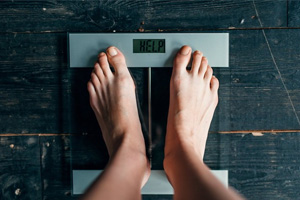What are the key factors for a healthy and pain-free back?
Discover the vital components that contribute to a pain-free and healthy back Explore the role of spinal structure, muscle strength, posture, and everyday habits in maintaining a strong and comfortable back Learn how to enhance your well-being through proper alignment, exercise, and ergonomic practices
What are the key factors for a healthy and pain-free back? A pain-free back is crucial for overall well-being, as it allows you to maintain an active lifestyle and perform daily tasks without discomfort. Your back's health depends on various factors, including spinal structure, muscle strength, posture, and daily habits. This article explores these essential elements, providing insights into maintaining a strong and pain-free back. Discover how proper spinal alignment, exercise routines, ergonomic practices, and more can contribute to a healthy back and improved quality of life.

Understanding the Anatomy of Your Back
Spinal Structure and Its Role
The spinal column, often referred to as the backbone, plays a fundamental role in supporting the body and protecting the delicate spinal cord. It consists of 33 vertebrae, each with a specific function. These vertebrae are categorized into different regions:
Cervical Vertebrae (Neck)
The seven cervical vertebrae are located in the neck region. They support the weight of the head and allow for its range of motion. Maintaining proper posture in the neck is essential for preventing strain and discomfort.
Thoracic Vertebrae (Upper Back)
The twelve thoracic vertebrae make up the upper back. They are attached to the ribcage, providing stability and protection for vital organs like the heart and lungs. Poor posture in this region can lead to upper back pain.
Lumbar Vertebrae (Lower Back)
The lumbar spine consists of five vertebrae in the lower back. These are the largest and bear the most weight. Good posture and strong lower back muscles are crucial for preventing lower back pain and injuries.
Sacral and Coccygeal Vertebrae (Base of the Spine)
The sacral and coccygeal vertebrae are fused and form the base of the spine. They are essential for stability, especially when sitting and standing. Problems in this area can result in discomfort and difficulty with everyday movements.
Between each pair of vertebrae, there are intervertebral discs that act as shock absorbers and allow for flexibility in the spine. Proper care and attention to spinal health are essential for a pain-free back.
Understanding the role of each part of the spine and how they work together is the first step in maintaining a healthy and pain-free back.
Muscles and Ligaments Supporting Your Back
Your back is not only supported by the spinal column but also by a complex network of muscles and ligaments that play a crucial role in maintaining its health and stability. Understanding these supportive structures is essential for a pain-free back:
Paraspinal Muscles
The paraspinal muscles run alongside the spine and help support its alignment. These muscles assist in maintaining proper posture and are essential for activities like bending and twisting.
Erector Spinae
The erector spinae muscles run along the length of the spine and help keep it upright. They are critical for maintaining good posture and preventing slouching, which can lead to back pain.
Abdominal Muscles
The muscles in the abdomen, such as the rectus abdominis and obliques, play a role in stabilizing the spine. A strong core provides support for the lower back and can help reduce the risk of back pain.
Ligaments
Ligaments are strong, fibrous tissues that connect bones to one another. In the spine, they help to stabilize the vertebrae and prevent excessive movement. Ligaments are crucial for protecting the spine from injury and ensuring its proper function.
Pelvic Floor Muscles
The pelvic floor muscles are located at the base of the spine and are essential for maintaining stability in the lower back. These muscles also play a role in supporting the organs in the pelvis.
It's important to keep these muscles and ligaments in good condition through regular exercise and stretching. A balanced and strong musculoskeletal system is key to a healthy and pain-free back.
Common Causes of Back Pain
Back pain can be triggered by various factors and conditions. Understanding the common causes of back pain is crucial in maintaining a healthy and pain-free back:
1. Poor Posture
Poor posture, such as slouching or hunching over, can place excessive strain on the spine and its supporting structures. Over time, this can lead to chronic back pain.
2. Muscle Strain
Overexertion, lifting heavy objects incorrectly, or sudden movements can lead to muscle strains. The muscles supporting the back can become inflamed and painful as a result.
3. Herniated Discs
A herniated or slipped disc occurs when the soft interior of a spinal disc pushes through the tough exterior. This can put pressure on nearby nerves and cause intense back pain.
4. Arthritis
Arthritis, particularly osteoarthritis and rheumatoid arthritis, can affect the joints in the spine, leading to pain and reduced mobility in the back. Arthritic changes in the spine are common causes of back pain in older individuals.
5. Sciatica
Sciatica is a condition where the sciatic nerve, which runs from the lower back down the legs, is compressed or irritated. This can result in sharp, shooting pain in the lower back and legs.
6. Osteoporosis
Osteoporosis leads to the weakening of bones, making them more susceptible to fractures. Compression fractures in the spine due to osteoporosis can cause severe back pain.
7. Spinal Stenosis
Spinal stenosis is the narrowing of the spinal canal, which can put pressure on the spinal cord and nerves. This condition often results in back pain and may require medical intervention.
Understanding these common causes of back pain is the first step in preventing and managing this often-debilitating condition. It's essential to adopt good habits and seek appropriate treatment when necessary to maintain a healthy and pain-free back.
Ergonomics and Posture
The Impact of Proper Sitting and Standing Posture
Proper posture is essential for maintaining a healthy and pain-free back. Whether sitting or standing, your posture plays a significant role in preventing back pain:
When sitting, ensure that your back is straight, shoulders are relaxed, and your feet are flat on the floor. Your computer monitor should be at eye level to reduce strain on your neck and upper back. Avoid crossing your legs, as it can affect blood circulation and lead to discomfort.
While standing, distribute your weight evenly on both feet. Keep your shoulders back and your head in a neutral position. If you need to stand for an extended period, consider using an anti-fatigue mat to reduce the strain on your lower back and legs.
Workstation Ergonomics for Back Health
Your workstation's ergonomics play a crucial role in back health, especially if you have a desk job. Consider the following ergonomic principles:
Adjust your chair's height so your feet are flat on the floor, and your knees are at a 90-degree angle. Your computer keyboard and mouse should be at a comfortable height to avoid straining your wrists and upper back. Use an ergonomic chair with lumbar support to maintain the natural curve of your lower spine.
Take short breaks to stand up, stretch, and walk around every hour to reduce the strain on your back. Implementing proper ergonomics in your workspace can significantly decrease the risk of back pain and discomfort.
Best Practices for Lifting and Carrying
Lifting and carrying objects improperly can lead to back strain and injury. To protect your back while lifting and carrying, follow these best practices:
When lifting, bend your knees and keep your back straight. Hold the object close to your body and use the strength of your legs to lift it. Avoid twisting your back while carrying a heavy load; instead, pivot with your feet. Use lifting aids or ask for assistance for heavy or awkward objects.
If you need to carry a backpack, distribute the weight evenly and use both shoulder straps to avoid overloading one side of your back. Be mindful of the weight you carry daily, as consistently carrying heavy loads can lead to chronic back pain.
Exercise and Back Strengthening
Core Strengthening Exercises for a Healthy Back
Core strengthening exercises are essential for maintaining a healthy back. A strong core provides stability and support to the spine, reducing the risk of back pain and injuries. Here are some effective core exercises:
1. Planks: Planks target the abdominal muscles, lower back, and shoulders. Hold a plank position for 30-60 seconds, gradually increasing the duration as your strength improves.
2. Bridge exercises: These exercises work on the muscles in your lower back, glutes, and hips. Lie on your back, bend your knees, and lift your hips off the ground. Hold for a few seconds and lower down. Repeat this movement several times.
3. Russian twists: Sit on the floor, bend your knees, and lean back slightly while keeping your back straight. Hold a weight or a household item and twist your torso to each side. This exercise engages your oblique muscles and helps with core stability.
Flexibility and Mobility Routines
Improving flexibility and mobility is crucial for a healthy back. Stiff muscles and limited range of motion can lead to back discomfort. Here are some routines to enhance your flexibility:
1. Stretching: Incorporate daily stretching into your routine, focusing on your back, hamstrings, and hip flexors. Perform gentle stretches and hold them for 15-30 seconds without bouncing.
2. Yoga and Pilates: These practices emphasize flexibility, balance, and core strength. Regular participation in yoga or Pilates classes can help maintain your back's health and overall well-being.
3. Foam rolling: Using a foam roller can release muscle tension and improve flexibility. Roll the foam roller along your back, targeting specific areas that feel tight or sore.
Cardiovascular Exercise's Role in Back Health
Cardiovascular exercises, such as walking, swimming, or cycling, play a significant role in maintaining a healthy back. They promote blood flow, improve endurance, and support overall physical well-being. Here's how cardiovascular exercise benefits your back:
1. Weight management: Cardio exercises help you maintain a healthy weight, reducing the strain on your spine and back muscles.
2. Enhanced circulation: Improved blood circulation ensures that the discs in your spine receive essential nutrients and stay healthy.
3. Endorphin release: Cardio workouts stimulate the release of endorphins, natural painkillers that can reduce back discomfort and promote a sense of well-being.
Include at least 150 minutes of moderate-intensity cardio exercises in your weekly routine to support a healthy back and overall physical health.
Nutrition and Hydration
Essential Nutrients for Spinal Health
Proper nutrition is vital for spinal health. Essential nutrients help maintain the strength and flexibility of the spine, reduce inflammation, and support the healing process. Here are some key nutrients for a healthy back:
1. Calcium: This mineral is essential for strong bones, including the vertebrae of the spine. Dairy products, leafy greens, and fortified foods are excellent sources of calcium.
2. Vitamin D: Vitamin D is crucial for calcium absorption, promoting bone health. You can obtain vitamin D from sunlight, fatty fish, and supplements if needed.
3. Omega-3 fatty acids: These healthy fats have anti-inflammatory properties and can help reduce back pain. Sources include fatty fish (salmon, mackerel), flaxseeds, and walnuts.
The Importance of Staying Hydrated
Hydration plays a critical role in maintaining spinal health. The intervertebral discs in your spine are composed mainly of water. Staying adequately hydrated ensures that these discs remain supple and capable of absorbing shock. Here's how you can stay hydrated:
1. Drink plenty of water: Aim to consume at least eight 8-ounce glasses of water (about 2 liters) daily. Adjust your intake based on your activity level and climate.
2. Monitor your urine: Check the color of your urine. Light yellow or pale straw is a good indicator of proper hydration. Dark yellow or amber-colored urine may suggest dehydration.
3. Include hydrating foods: Consume water-rich foods like watermelon, cucumber, and oranges, which contribute to your daily fluid intake.
Dietary Tips for a Pain-Free Back
Your diet can significantly impact your back health. Certain foods and dietary habits can either promote or hinder spinal well-being. Here are some dietary tips to maintain a pain-free back:
1. Maintain a balanced diet: Ensure that your diet includes a variety of fruits, vegetables, lean proteins, and whole grains to provide the necessary nutrients for overall health.
2. Limit inflammatory foods: Reduce the consumption of processed foods, sugary beverages, and foods high in saturated and trans fats, as they can contribute to inflammation and back pain.
3. Manage your weight: Excess weight places added strain on the spine. Maintaining a healthy weight through a balanced diet can prevent back problems.
These sections provide detailed information on essential nutrients for spinal health, the importance of staying hydrated, and dietary tips to maintain a pain-free back.
Stress Management and its Impact
Stress-Related Back Pain Causes
Stress is a common contributor to back pain. When you're under stress, your body's natural response includes muscle tension, particularly in the back and neck. Prolonged stress can lead to chronic back pain. Here are some of the stress-related back pain causes:
1. Muscle Tension: Stress can lead to the tightening of the muscles in your back, causing discomfort and pain. The longer these muscles remain tense, the more likely it is to develop into chronic pain.
2. Poor Posture: Under stress, people often slouch or adopt unhealthy postures. This can put additional pressure on your spine, leading to back pain over time.
3. Reduced Blood Flow: Stress can lead to decreased blood flow to the back muscles, limiting their ability to receive essential nutrients and oxygen, potentially causing discomfort.
Relaxation Techniques for Back Pain Relief
Relaxation techniques can be highly effective in relieving back pain caused by stress or muscle tension. Here are some relaxation techniques that can help alleviate back pain:
1. Deep Breathing: Practicing deep breathing exercises can reduce muscle tension, promote relaxation, and improve blood flow to the back muscles. This can ease back pain and reduce stress.
2. Progressive Muscle Relaxation: This technique involves systematically tensing and relaxing muscle groups, helping to release muscle tension and promote relaxation in the back and other areas.
3. Yoga and Stretching: Yoga and stretching routines can enhance flexibility, improve posture, and reduce back pain. These exercises also have stress-reducing benefits.
Improving Sleep for a Healthy Back
Quality sleep is crucial for maintaining a healthy back. When you sleep, your body undergoes repair and recovery processes. Here's how you can improve your sleep for a healthy back:
1. Invest in a Comfortable Mattress and Pillow: Ensure that your mattress and pillow provide the necessary support and comfort for your back. A mattress that is too soft or too firm can lead to back pain.
2. Maintain a Consistent Sleep Schedule: Try to go to bed and wake up at the same times every day, even on weekends. Consistency can help regulate your body's internal clock for better sleep.
3. Create a Relaxing Bedtime Routine: Engage in calming activities before bed, such as reading or taking a warm bath, to signal to your body that it's time to wind down and sleep.
These sections provide detailed information on stress-related back pain causes, relaxation techniques for back pain relief, and tips for improving sleep to maintain a healthy back.
Injury Prevention and Rehabilitation
Tips for Preventing Back Injuries
Preventing back injuries is essential for maintaining a pain-free back. Here are some tips to help you avoid back injuries:
1. Lift with Proper Technique: When lifting heavy objects, bend your knees, keep your back straight, and use the strength of your legs to lift. Avoid lifting with your back bent forward, as it can strain the muscles and lead to injuries.
2. Maintain a Healthy Weight: Excess weight, especially around the abdominal area, can put extra pressure on your spine, causing back pain. Maintaining a healthy weight through diet and exercise can reduce this risk.
3. Exercise Regularly: Engaging in regular physical activity, including core-strengthening exercises, can help support your spine and reduce the risk of back injuries. Exercise also contributes to overall back health.
Rehabilitation Strategies for Back Pain
When you experience back pain, rehabilitation strategies can aid in recovery and pain relief. Here are some rehabilitation techniques:
1. Physical Therapy: A physical therapist can create a customized exercise plan to strengthen the muscles supporting your back, improve flexibility, and reduce pain.
2. Chiropractic Care: Chiropractors can provide spinal adjustments to alleviate pain and improve spinal alignment, helping with back pain recovery.
3. Heat and Cold Therapy: Applying heat or cold to the affected area can help reduce pain and inflammation, especially in cases of acute back pain.
When to Seek Professional Help
Knowing when to seek professional help for your back pain is crucial. Here are some signs that indicate it's time to consult a healthcare professional:
1. Persistent Pain: If your back pain continues for an extended period, despite home remedies and self-care, consult a healthcare provider to determine the cause and appropriate treatment.
2. Numbness or Tingling: If you experience numbness, tingling, or weakness in your legs or arms along with back pain, it could be a sign of nerve compression, and a medical evaluation is necessary.
3. Sudden Intense Pain: If you experience sudden and severe back pain, it could indicate a more serious issue, and you should seek immediate medical attention.
These sections provide detailed information on preventing back injuries, rehabilitation strategies for back pain, and guidance on when to seek professional help for back issues.
FAQs about Maintaining a Healthy and Pain-Free Back
Q1: How can I prevent back injuries while lifting heavy objects?
A1: To prevent back injuries when lifting heavy objects, follow these tips:
- Bend your knees and keep your back straight.
- Use the strength of your legs to lift, not your back.
- Avoid bending your back forward while lifting, as it can strain the muscles.
Q2: What are the benefits of physical therapy for back pain rehabilitation?
A2: Physical therapy offers several benefits for back pain rehabilitation:
- Customized exercise plans to strengthen back-supporting muscles.
- Improved flexibility, which reduces pain and enhances mobility.
- Education on proper body mechanics to prevent future back issues.
Q3: When should I seek professional help for my back pain?
A3: You should seek professional help for your back pain if:
- The pain persists for an extended period, despite self-care.
- You experience numbness, tingling, or weakness in your limbs along with back pain, suggesting nerve compression.
- You encounter sudden and severe back pain, which could indicate a more serious issue.
Q4: Can chiropractic care help with back pain relief?
A4: Yes, chiropractic care can aid in back pain relief. Chiropractors perform spinal adjustments to alleviate pain and improve spinal alignment. This treatment can be effective for various types of back pain, especially those related to spinal misalignment.
Q5: What are some effective heat and cold therapy techniques for back pain?
A5: Heat and cold therapy can be helpful for back pain relief. Consider these techniques:
- Apply a warm compress to the affected area for 15-20 minutes to relax muscles and improve blood flow.
- Use an ice pack wrapped in a cloth for 15-20 minutes to reduce inflammation and numb pain in cases of acute back pain.
- Alternate between heat and cold treatments for some conditions, following healthcare provider recommendations.










